Simple T-Shirt Dresses
 Saturday, May 19, 2018 at 8:18PM
Saturday, May 19, 2018 at 8:18PM Last summer I made quite a few dresses. I find dresses cool and easy to wear, with a bit more style than shorts during the warm weather months. Being short on sewing time (always) I have been trying to start with patterns I already have fitted, changing them to create a new look. This time I started with my favorite t-shirt pattern, The Perfect T-Shirt by Pamela's Patterns. This shirt has a bust dart which I like as well as numerous opportunities to adjust the fit.
I began with my tried-and-true pattern.
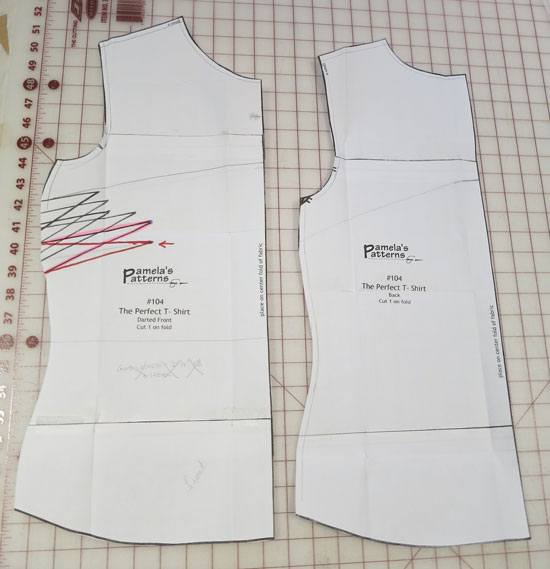
I drew a line perpendicular to the center front at the narrowest point of the waist; you can faintly see the line on the Front pattern in the above picture. I did the same for the Back. I retraced the patterns above the lines, adding a seam allowance.
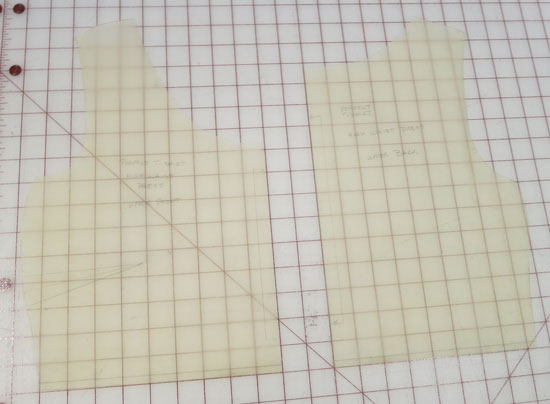
The upper front and back are now finished.
I then worked with the pattern section that remained below the line I had drawn at the waist. First, I added a seam allowance above the drawn line. I determined the skirt length that I wanted and extended the center front line to that length. I also extended the side seam to approximately the same point. I wanted to flare the skirt but I didn't want to add all of the volume at the side seams (this creates an unbalanced silhouette and can make the side seams appear longer than the rest of the skirt). Instead, I drew several vertical lines up to (but not through) the seam allowance at the waist, cut along these lines and spread the cuts open to achieve the desired amount of flare. I drew in a gently curved hem (with hem allowance). When I had all of this complete, I traced a new copy of the skirt pattern.
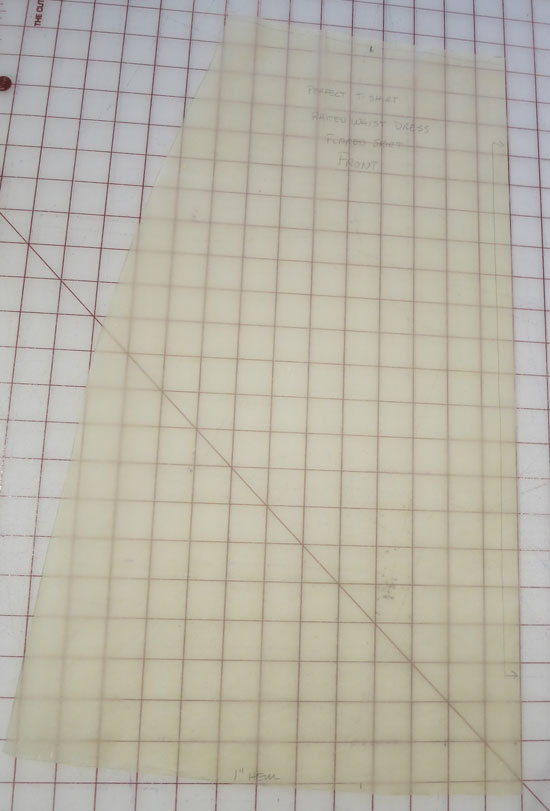
Here's the first dress I made from my new pattern. I considered this a muslin, but it turned out well enough that I wear it. It's made from 4-way cotton/spandex jersey. I bound the neckline with a similar solid fabric.
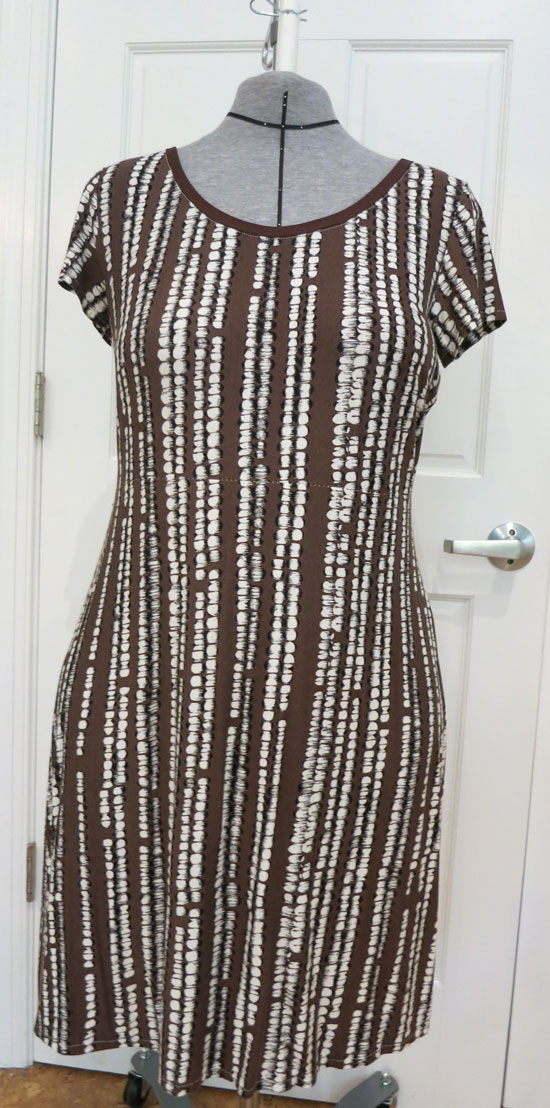
Several other dresses followed:
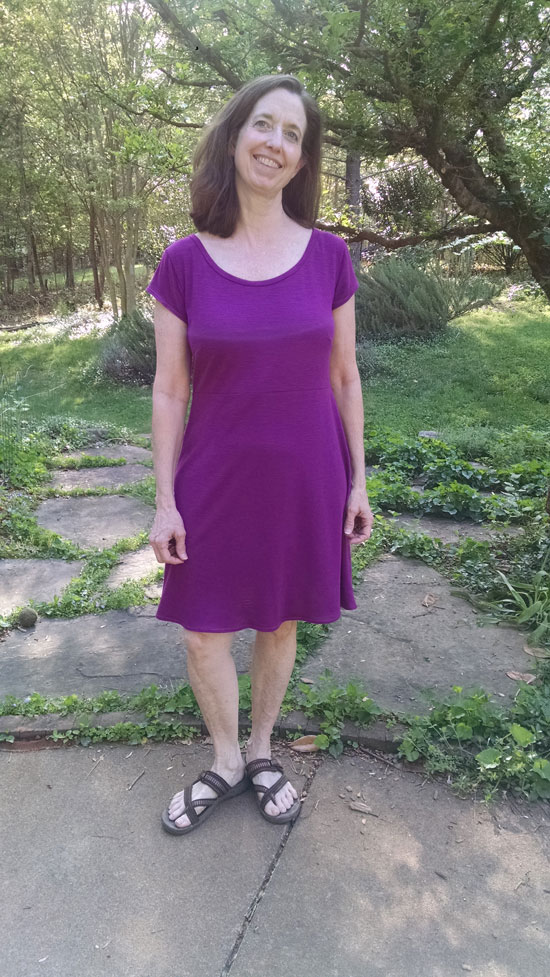
This one is made from a cotton/poly slubbed jersey.
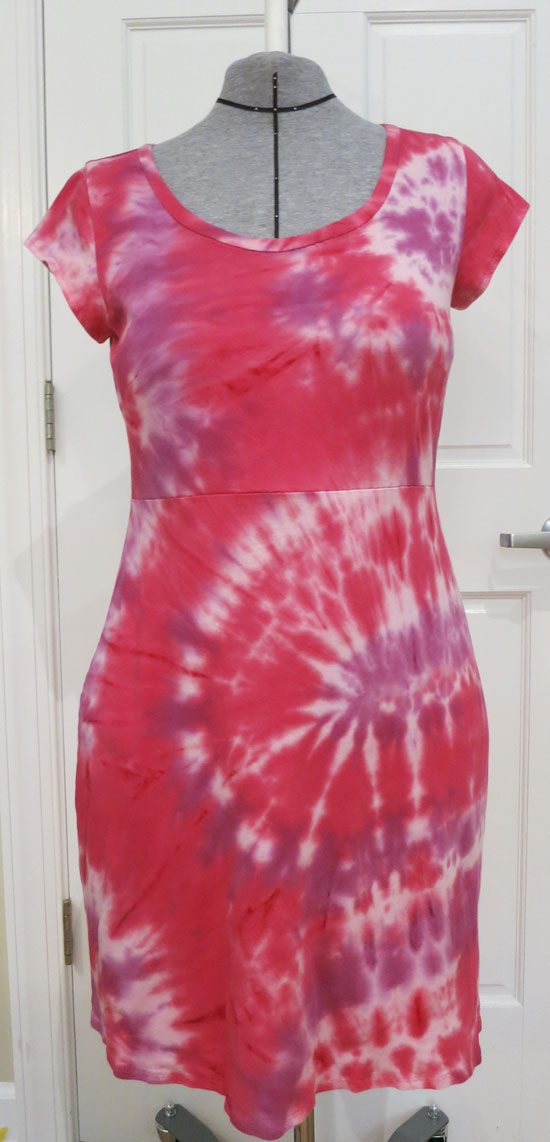
Cotton tie-dye.

The next dress began its life as two XL t-shirts that I paid $2.00 each for.
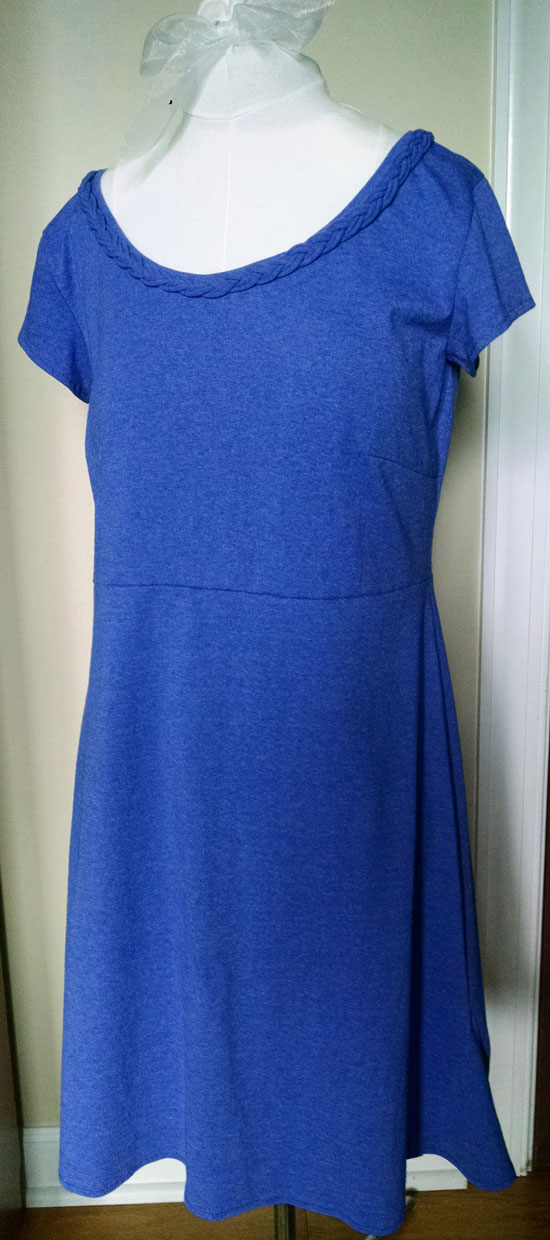
I added a braided trim around the neckline.

The braid looks more complex than it is. I took advantage of the fact that knit jersey will roll along the cut edge. The braid is formed from three strips of fabric cut on the cross grain. I allowed the edges to curl in before performing a simple three-strand braid. The two rolled edges of each strip make it appear that the braid was formed from doubled tubes.
I had one final dress in mind but it required some additional pattern work. I wanted to add a pleat on either side of center front on the skirt. I determined the pleat depth and cut the pattern vertically, adding in additional pattern paper to account for the pleat.
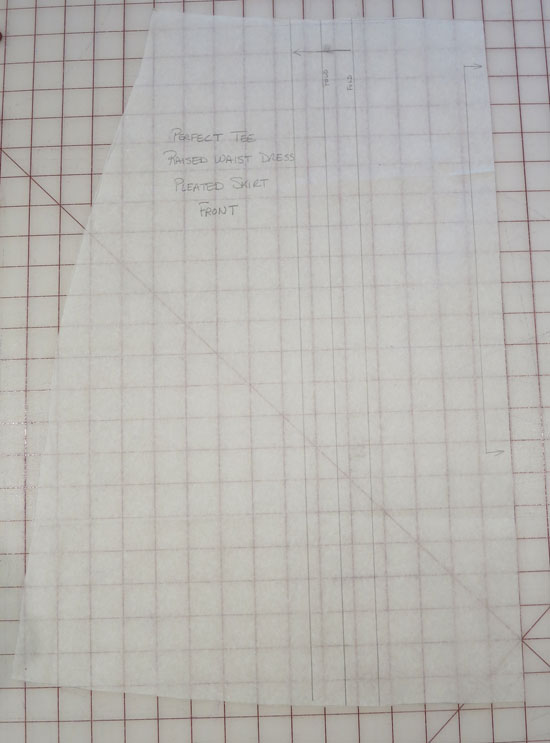

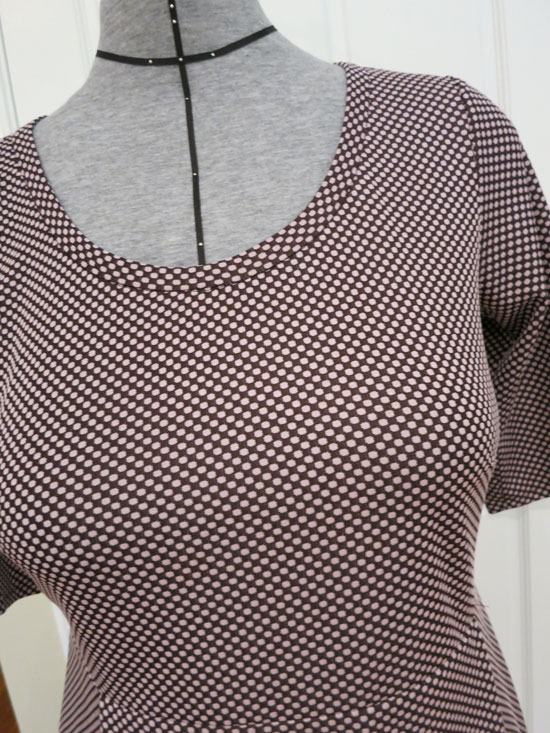
I hope this post will inspire you to use your own t-shirt pattern to create new designs with just a little bit of simple pattern work.




















